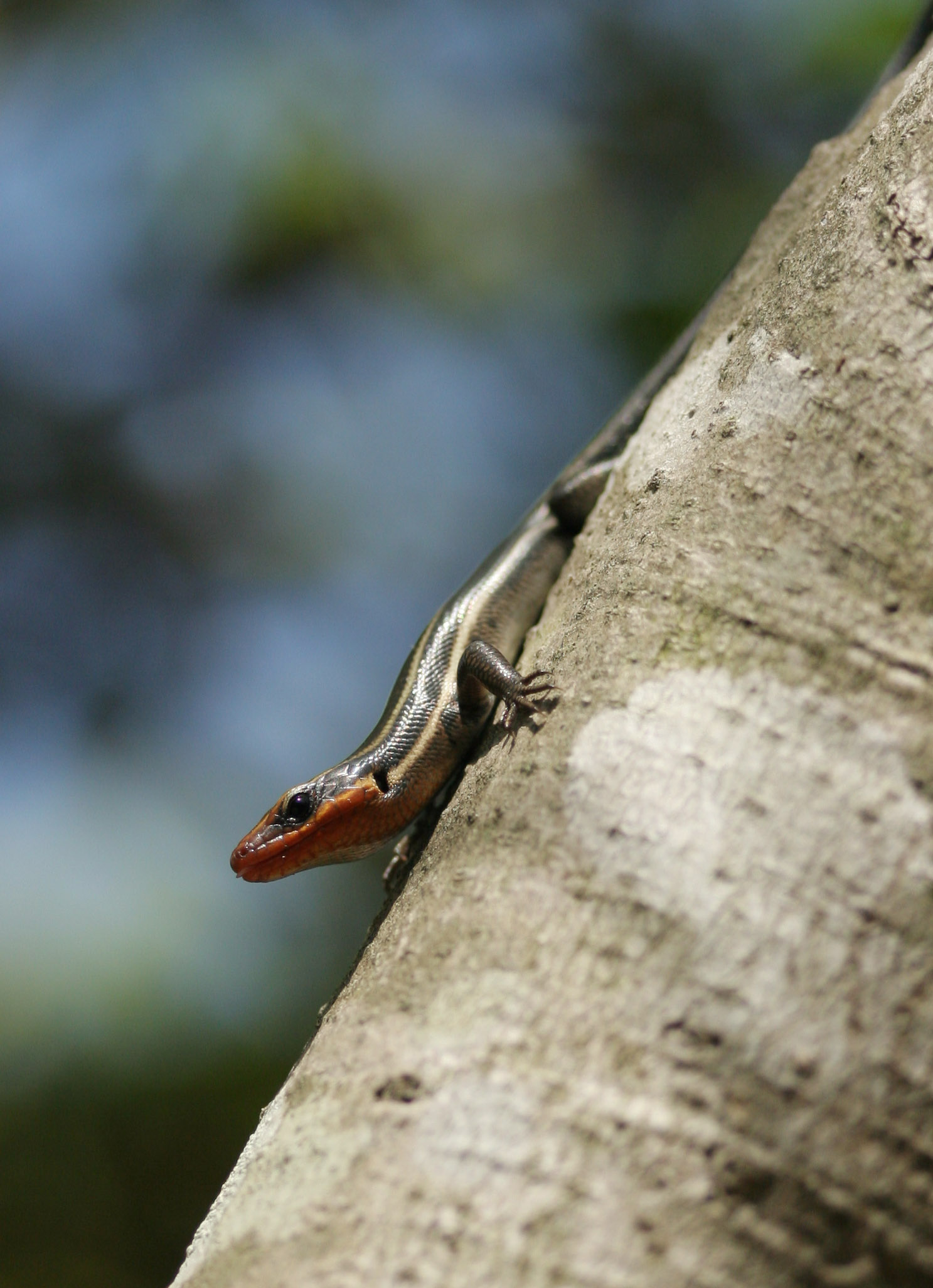The photos in this post were all taken during a brief outing to the NC Botanical Garden back in late April – I was planning to do a detailed post, with a lot more images, and just never got on top of it. So I’m simply going to feature one aspect here. This male southeastern five-lined skink (Plestiodon inexpectatus) was aware of my presence, but I held still long enough that it determined I wasn’t enough of a threat and resumed its patrol for ants. During the pause, however, I was able to do a couple of pics with different settings.

The image above was shot with the Mamiya 80mm macro wide open at f4, so the shortest depth-of-field that the lens could provide (at that focal distance, at least – had I been closer, I could have shortened it considerably, because that’s how lenses and magnification works.) I draw your attention to the background, which you may not have consciously noted or thought about; that’s kinda the idea, because it’s defocused enough not to be distracting, even though a moment’s examination indicates that there’s a bit of complication back there. Our eyes, however, are always drawn to the sharpest part of the photo, so the fuzzy bits can pass without real notice.
It can be different though.

Only a second or so later, I shot the same framing at f11 instead, and we can easily see the difference in the background – and even the foreground trunk. Without the first image to compare it to, anyone might have found this worked just fine, but in comparison it’s obvious that the first is a whole lot better. Not only is there detail now that makes the entire image a bit ‘busier,’ the increased sharpness also increased the contrast, making the photo seem harsher. In fact, I compared these back and forth numerous times, thinking that the skink itself was higher in contrast, but it’s not really, or not by more than a tiny fraction; just being close to the more-contrasted background made me, at least, carry over that trait to the subject itself without warrant.
Now look at the back end of the skink in both photos. You can see that the first at f4 didn’t even get the entire reptile in focus, and this is part of the tradeoff, most especially in macro work but often visible in other circumstances. We’d like the background to be perfectly defocused, but the subject to be sharp throughout, and many times this just isn’t possible. Also, with a very short depth-of-field, it can sometimes take only a minor twitch in position or focus travel (for instance, the camera being uncertain which part of the subject we were really trying to focus upon) to ruin sharp focus on a key element. While I achieved what I was after with the top image, I have a couple of others (okay, had – they’re discarded now) that missed critical focus by a few millimeters, simply through my inability to hold inhumanly still during the whole short session. Which is why I often take a lot of frames of subjects like this, because it’s very easy to miss.
 By the way, I’ve watched species like this countless times over some fairly long periods, hoping to capture images of them feeding – they primarily like ants, but will snag many kinds of small insects. I’ve never been truly successful, though on occasion I’ve captured the aftermath when I’ve been too slow. This one apparently knew what I was waiting for, offering its opinion of my patient efforts if you look very closely…
By the way, I’ve watched species like this countless times over some fairly long periods, hoping to capture images of them feeding – they primarily like ants, but will snag many kinds of small insects. I’ve never been truly successful, though on occasion I’ve captured the aftermath when I’ve been too slow. This one apparently knew what I was waiting for, offering its opinion of my patient efforts if you look very closely…




















































